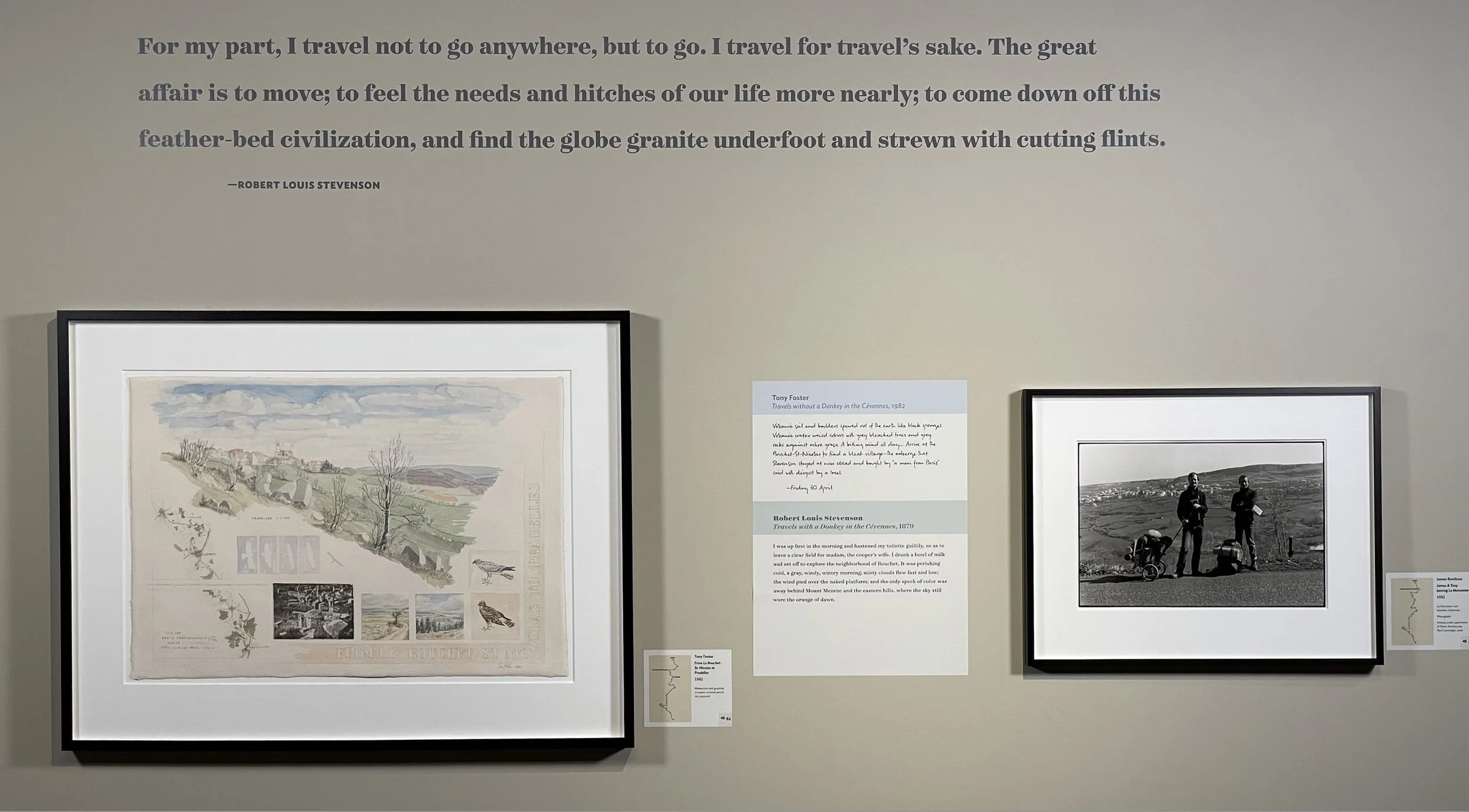Travels with and without a Donkey in the Cévennes Exhibition
Two Journeys, a Century Apart
Three Artists I Robert Louis Stevenson, author I Tony Foster, painter I James Ravilious, photographer
James Ravilious. Cows leaving their town lodgings, Pradelles, Cévennes, France, 1982
For my part, I travel not to go anywhere, but to go. I travel for travel’s sake. The great affair is to move; to feel the needs and hitches of our life more nearly; to come down off this feather-bed civilization, and find the globe granite underfoot and strewn with cutting flints.
—Robert Louis Stevenson
Robert Louis Stevenson’s 19th century adventure in the Cévennes region of France inspired his classic work, Travels with a Donkey in the Cévennes. One hundred years later, Stevenson’s book influenced Tony Foster to follow the author’s path, and encourage his friend and fellow artist James Ravilious to join him on their own exploration of the region. This exhibition follows the 120-mile trail of the three artists, beginning in the Le-Puy-en-Velay and ending in St.-Jean-du-Gard, as each artist shares his reflections of the French countryside.
Even though these adventures were a century apart, the artists’ images and words often align as they record the flora and fauna present, frustrations with weather and exploits with locals. There are also places where their experiences diverge, reflecting how time has altered the land and town space. And there are moments of beauty that each artist reveals through their own expressive language be it words, watercolor or film.
Art historian and Foster advisor Duncan Robinson summarizes the impact of the 20th century adventure: Foster and Ravilious learned the need for resourcefulness, courage and more than a little physical stamina. Both produced exciting new work as a result and for Foster, whose eye as a painter had already been caught by the new possibilities inherent in the time-honoured convention of the picturesque tour, the experiment was decidedly one to be repeated.
This exhibition is dedicated to our friend, Duncan Robinson (1941-2022), an internationally celebrated curator and museum director. Since curating Tony’s first U.S. exhibition at Yale Center for British Art in 1985, he supported and advised Tony throughout his career and was one of the kindest, most gracious people we had the good fortune to know.


